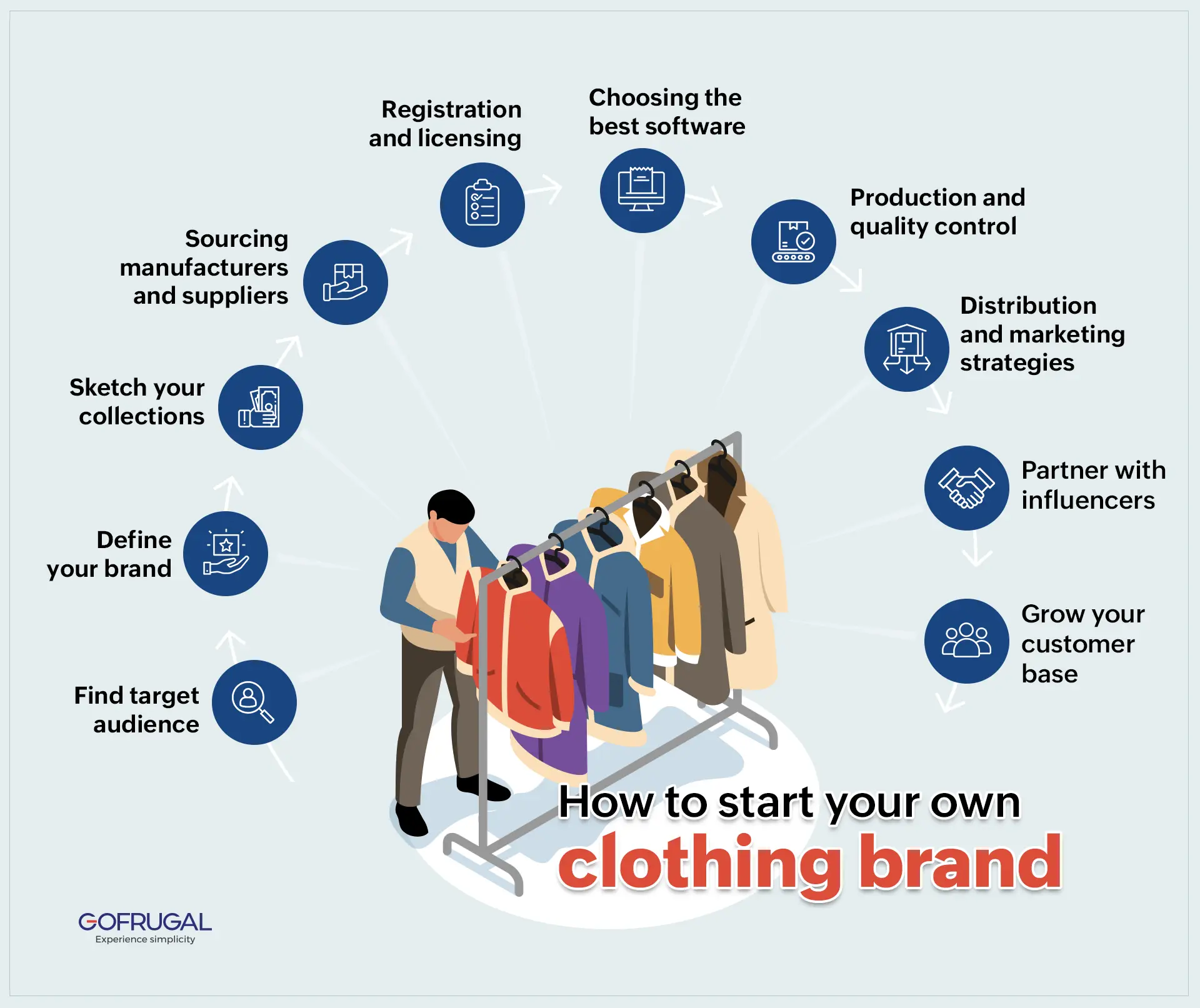Branded Clothing for Active Lifestyles: What Fabrics Support Performance?
Branded Clothing for Active Lifestyles: What Fabrics Support Performance?
Blog Article
The Relevance of Lasting Clothing: Just How It Affects the Setting and Your Storage room
Lasting apparel is increasingly identified for its essential function in reducing the environmental impact of the fast garment industry. By concentrating on environment-friendly products and honest production techniques, it resolves pushing ecological problems. This shift not just profits the earth but also influences consumer options, causing a more thoughtful technique to wardrobe monitoring. Understanding these dynamics elevates crucial concerns about fashion's future and personal responsibility in forming it.
The Environmental Footprint of Rapid Style

Benefits of Lasting Products
Lasting products provide considerable benefits, especially via green fabric choices that reduce ecological damage. These materials likewise show sturdiness and long life, lowering the need for regular replacements. As an outcome, they contribute to an extra sustainable fashion business and promote responsible customer behavior.
Eco-Friendly Material Selections
While the garment industry has long been linked with rapid fads and ecological injury, the surge of green textile selections presents a transformative chance. Lasting materials such as natural cotton, hemp, and Tencel have gained popularity because of their lower environmental effect. These textiles are frequently created without dangerous pesticides and need less water, reducing their carbon footprint - Branded Clothing. In addition, numerous eco-friendly materials are eco-friendly, adding to a circular economic situation by reducing waste. Picking sustainable materials not only supports eco accountable methods however also advertises much healthier ecological communities. As customers end up being much more knowledgeable about their purchasing power, the need for environmentally friendly textiles encourages brand names to innovate and take on more lasting manufacturing techniques, eventually benefiting the planet and future generations
Toughness and Longevity Benefits
Many consumers are increasingly identifying the toughness and longevity benefits of sustainable materials in their clothes choices. Unlike standard fabrics, sustainable products such as natural cotton, hemp, and recycled polyester are engineered to hold up against wear and tear, leading to garments that last much longer. This minimized regularity of replacement not only saves customers cash over time however also reduces waste created by quick style. In addition, sustainable garments commonly employs environment-friendly production approaches that enhance fabric stamina, adding to a decrease in the general carbon impact. By spending in long lasting clothes, consumers can cultivate a more sustainable closet while taking pleasure in top quality pieces that maintain their visual and performance gradually. Subsequently, durability and longevity stand as key benefits of choosing sustainable products.
Decreasing Waste Through Lasting Practices
Minimizing waste in the garment industry can be attained with cutting-edge techniques such as upcycling and repurposing materials. In addition, embracing minimalist closet approaches urges consumers to prioritize quality over quantity, ultimately lowering garments consumption. Together, these techniques add substantially to an extra lasting garments version.
Upcycling and Repurposing Materials
Upcycling and repurposing products have emerged as ingenious methods in the apparel industry, transforming thrown out textiles into beneficial brand-new items. This method not only decreases waste however additionally urges creativity and originality in clothes style. By taking old garments and materials, designers can produce special items that reflect personal design while decreasing the need for brand-new resources. Additionally, upcycling usually requires much less power and water compared to conventional manufacturing procedures, greatly lowering the ecological footprint of style. As consumers come to be more familiar with sustainability, the popularity of upcycled garments remains to increase, promoting a round economic situation. Inevitably, these techniques contribute to a much more sustainable future, where fashion prioritizes environmental health and wellness over rapid production and usage.

Minimalist Wardrobe Strategies
As individuals increasingly look for to decrease their ecological effect, adopting minimal wardrobe approaches has obtained traction as a reliable method to sustainable fashion. These techniques highlight quality over quantity, motivating consumers to curate a smaller collection of flexible, long lasting clothes. By focusing on timeless pieces that can be blended and matched, individuals can lower the frequency of purchases and ultimately decrease waste.Additionally, minimalism advertises mindful intake, prompting consumers to assess the environmental and honest effects of their selections. This technique not just fosters a more lasting lifestyle yet also simplifies day-to-day decision-making relating to outfit. As individuals embrace minimal principles, they add to a fashion culture that values sustainability and responsible consumerism, inevitably leading to a much more eco-conscious culture.
The Role of Moral Labor in Lasting Fashion
While several consumers are significantly mindful of the ecological consequences of their apparel selections, the relevance of honest labor practices in lasting fashion can not be ignored. Ethical labor includes fair salaries, secure working conditions, and respect for workers' legal rights, forming the backbone of liable style manufacturing. Brands that prioritize moral labor not just uplift neighborhoods yet additionally set a criterion for accountability in the industry.Moreover, the integration of ethical methods cultivates openness, allowing consumers to make enlightened selections concerning their acquisitions. This technique contrasts greatly with rapid fashion's unscrupulous labor models, which frequently prioritize profit over individuals. By sustaining companies devoted to honest labor, consumers add to a system that values human self-respect along with environmental sustainability. Moral labor is not simply an add-on; it is vital to the wider mission of lasting style, making sure that the mission for eco-friendliness does not come at the expense of human civil liberties.
The Effect of Lasting Clothing on Carbon Emissions
Sustainable clothing has the possible to considerably reduce carbon discharges connected with the fashion business. Conventional garment manufacturing contributes notably to greenhouse gas exhausts, primarily as a result of energy-intensive production procedures and making use of non-renewable resources. On the other hand, lasting fashion concentrates on environmentally friendly products, such as natural cotton or linked here recycled fibers, which typically call for less power to produce.Moreover, sustainable brand names often tend to take on more effective production methods, minimizing waste and lowering total exhausts. By prioritizing resilience and timeless layout, lasting garments encourages customers to acquire less frequently, additional reducing the carbon footprint related to overconsumption.Additionally, numerous sustainable brand names are dedicated to transparency in their supply chains, allowing consumers to make enlightened choices that line up with their values. Eventually, moving in the direction of sustainable garments can result in a substantial decrease in carbon emissions, adding to a much healthier world and a much more lasting future for the fashion business.
Sustaining Neighborhood Economic Climates With Lasting Selections
The change towards lasting apparel not only addresses ecological concerns yet likewise considerably benefits neighborhood economic climates. By picking sustainable fashion, consumers usually support little organizations and regional craftsmens, boosting neighborhood strength. These enterprises typically operate a smaller sized range, focusing on workmanship and moral practices over mass production.Investing in locally made sustainable clothing fosters job creation and stimulates economic growth within communities. As customers come to be a lot more familiar with the environmental effect of their acquisitions, they increasingly look for products that reflect their worths. This need encourages regional makers to embrace lasting methods, adding to a round economy.Moreover, supporting neighborhood services minimizes transport discharges, lining up with eco-conscious customer actions. The interconnectedness of sustainable clothes and regional economies underscores the vital function that individual options play in promoting both financial and ecological wellness. By fostering these local connections, neighborhoods can thrive while additionally working towards an extra sustainable future.
Changing Your Storage Room: Tips for a Sustainable Wardrobe
As people look for to decrease their environmental impact, transforming a closet right into a lasting closet comes to be a necessary action. One effective approach is to assess existing clothes, keeping just items that are worn frequently and that straighten with sustainability objectives. Prioritizing quality over amount is vital; buying sturdy pieces from environmentally friendly brands can greatly decrease waste.Additionally, integrating second-hand things can revive a closet while minimizing environmental damage. Organizing clothes swaps with friends or contributing unused items can additionally advertise sustainability.When purchasing, individuals need to look for materials that are natural, recycled, or biodegradable, and stay clear of fast fashion sellers - Branded Clothing. Ultimately, exercising mindful intake by thoughtfully considering each acquisition can add to a much more lasting way of living. By applying these tips, one can create a closet that mirrors personal design while supporting ecological stewardship
Frequently Asked Inquiries
Just How Can I Recognize Sustainable Garments Brands?
To determine lasting garments brand names, one should look into materials used, examine for qualifications like Fair Profession, and check out the brand name's openness concerning their manufacturing processes, labor techniques, and environmental effect, ensuring ethical and eco-friendly techniques are prioritized.
What Are the Prices Related To Sustainable Style?
The costs connected with sustainable style can differ substantially. Greater production expenditures, ethical sourcing, and eco-friendly products typically cause raised market prices, which may deter some customers while attracting like this environmentally aware shoppers.
Can Lasting Apparel Be Trendy and Trendy?
Lasting clothes can certainly be fashionable and trendy. Designers increasingly focus on cutting-edge materials and honest manufacturing approaches, verifying that fashion and sustainability can exist side-by-side. Consumers currently have varied alternatives that blend aesthetic appeals with ecological consciousness.
Exactly How Does Washing Clothing Affect Their Sustainability?
Washing clothes considerably effects sustainability by consuming water and energy, adding to pollution, and creating microplastic release. Frequent cleaning can break down textiles, reducing their life expectancy and raising the requirement for replacements, inevitably intensifying environmental issues.
What Is the Lifespan of Sustainable Garments Contrasted to Quick Style?
The life expectancy of sustainable clothes generally surpasses that of quick style items, commonly long-term numerous years due to high quality products and craftsmanship. In contrast, fast style garments may degrade rapidly, requiring even more frequent replacements. Sustainable clothing is significantly identified for its critical function in decreasing the ecological effect of the quick style industry. While numerous customers are increasingly aware of the environmental consequences of their garments selections, the significance of honest labor techniques in sustainable style can not be forgotten. Branded Clothing. Sustainable garments has the prospective to substantially decrease carbon emissions associated with the style industry. In comparison, sustainable fashion concentrates on green products, such as organic cotton or recycled fibers, which typically call for less energy to produce.Moreover, sustainable brand names often tend to take on a lot more effective manufacturing methods, reducing waste and lowering total emissions. By focusing on longevity and classic style, lasting clothing encourages consumers to buy much less often, additional minimizing the carbon footprint connected with overconsumption.Additionally, several sustainable brand names are dedicated to transparency in their supply chains, allowing consumers to make web educated choices that line up with their worths
Report this page